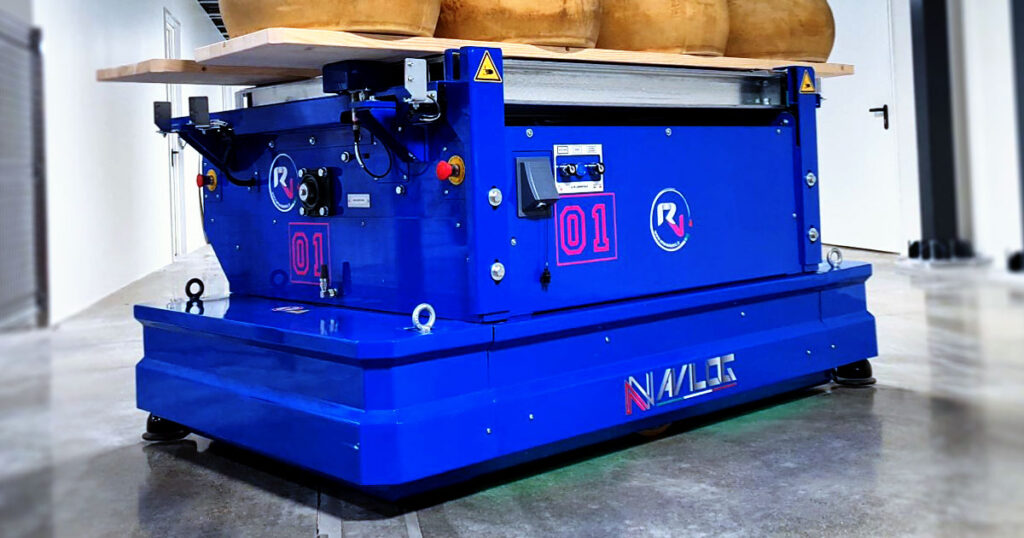AGV: what are they? What are they for? What are the advantages? Here you will find answers to the most frequently asked questions about AGV.

In this article:
- What are the AGV?
- Who invented the AGV?
- What are AGV for?
- What are the different types of AGV available?
- What are the advantages of AGV?
What are the AGV?
AGV è un acronimo preso da un termine inglese, automated guided vehicles. In italiano, veicoli a guida automatizzata.
An AGV is a robot that moves by following markers, for example:
- Wires
- Floor magnets
- Laser references
These robots are increasingly used in the industrial sector to move materials from the production plant to the warehouse or to manage storage more efficiently and with less risk to staff.
Who invented the AGV?
The first AGV in history was introduced for the first time by Arthur "Mac" Barrett, the founder of Barret Electronics. Barrett invented an indoor vehicle that followed a cable under the floor, allowing it to move and navigate on his own. He named it "Guide-O-Matic", and it was released in 1954.


What are AGV for?
It is possible to use AGVs within a plant for many functions:
- LOAD HANDLING - AGV connect the warehouse automatically. They are capable of handling bulky or heavy materials without risk. There are vehicles that move pallets and reels with all the necessary accessories (roller conveyors, lifting forks, special protections, etc.).
- END-OF-LINE INTEGRATED SOLUTIONS - From the organization of shipments to loading and unloading on trucks, end-of-line integrated solutions are indispensable for the automation of tasks such as RFID packaging and labeling. In short, AGV can be used to manage the finished product at the end of production, bringing more safety and time saving.
- INTEGRATION BETWEEN SYSTEMS - AGVs relate to storage systems for automated storage of products, or for the management of reels and pallets in shipping areas.
Subscribe to our newsletter
What are the different types of AGV available?
Since Arthur Barrett, the technological evolution of AGVs has never stopped. More modern methods have developed over the years.
- MAGNETIC GUIDE - path bounded by a series of magnets inserted into the floor.
- MAGNETIC-GYROSCOPIC GUIDE - introduction of a gyroscope that increases the accuracy of navigation.
There are also even more advanced guides, using lasers and GPS systems. The more technology increases, the better the performance of AGV.
What are the advantages of AGV?
AGV have many advantages: from the opportunity to work in combination with human intervention to the simplicity of redesign of the routes, from the cancellation of destination errors to the possibility of making updates without stopping the plants. All for greater precision on the management of the supplyes. We see the advantages in the details:
- Our AGV allow you to increase your productivity. They can work 24/7 at a pace and conditions that a man could not sustain. This happens thanks to an automatic handling system equipped with inductive feeding.
- AGV are safe, because they have controlled driving: from braking to the phases of acceleration and deceleration. This reduces work accidents and, as a result, increases plant performance: errors and accidents cause damage to products, equipment and structures. In this case, you need to spend a lot of money to repair or replace them.
- Fixed automatic systems are more difficult and expensive to maintain, while AGV provide more flexibility.
Errevi Elettric offers customized solutions for every customer need. Let's get in touch! An expert of our Sales Team will advise you on your logistics project.
Follow us on our social media channels
